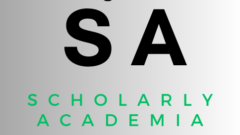COURSE:
NU643: Advanced Psychopharmacology
Overview
Submit the complete Pediatric Clinical Reference Tool here for individual grading. Each member of each group must submit a copy of their groups Pediatric Treatment Reference for individual grading.
Your assignment should be in APA format with evidence-based references to support your statements.
Please refer to the Grading Rubric for details on how this activity will be graded.
SOLUTION
Pediatric Clinical Reference Tool: Depression
| CHILD | ADOLESCENT
(OK TO TYPE “SAME AS A CHILD” IF APPROPRIATE) |
NOTABLE DIFFERENCES FROM
ADULTS (IF APPLICABLE) |
|
| DESCRIPTION OF THE DISORDER IN PEDIATRIC POPULATIONS | Major depressive Disorder affects two percent of children in the US.
Among the most notable indicators is: irritability, anger, hostility, sadness, sad facial expressions, poor eye contact, disengagement from physical activity, loss of interest, weight loss, fatigue, reduced concentration, and reduced school performance (Zhou et al., 2020). The signs in children may mainly be observed since children younger than the age of 7 years may have difficulty expressing themselves. In this regard, the symptoms felt by the children may be communicated through behavioral changes and vague statements alluding to symptoms. The symptoms may be projected with behaviors varying in intensity from mild to severe such as refusal to go to school, crying, and confrontational attitude. |
The description of depression prevalence among adolescent is same as the child description with various additions.
The condition affects eight percent of the adolescent population in the US. The conditions may be self-medicated and is often closely related to the recurrence in adulthood. |
While the diagnostic tools used to determine the presence of depression are similar throughout the age demographic, the diagnosis in children and adolescent must be more critical and sensitive to behavioral observations and keen attention to key signs in their answers (Oud et al., 2019).
The DSM-5 diagnostic tool is used throughout the age demographic with attention to details in children and adolescent populations based on the inability to articulate specific internal mood states. Key indicators in children may include poor performance in school, easily agitated, irritability, aggression, poor concentration, and social isolation. Daily activity, interactions, and family and friends’ relations may be significantly and adversely affected by depressive tendencies. Suicidal ideation and planning may be experienced in adolescent and adult patients
|
………………………….$10
